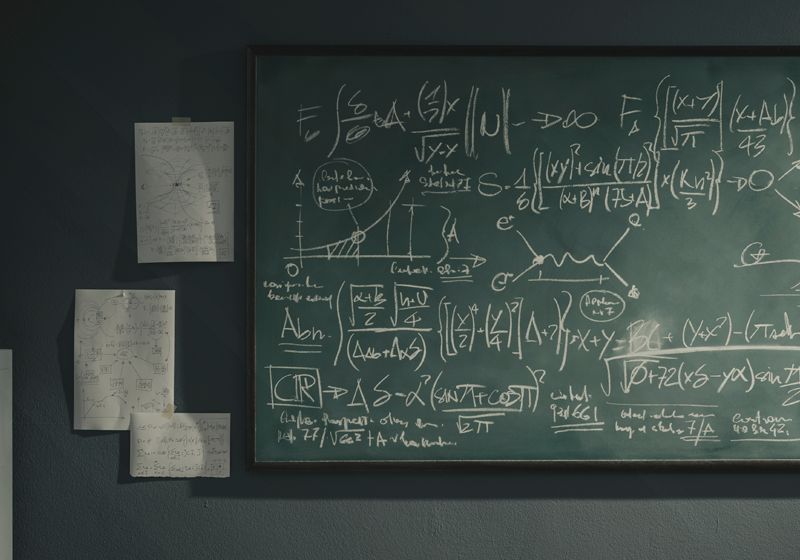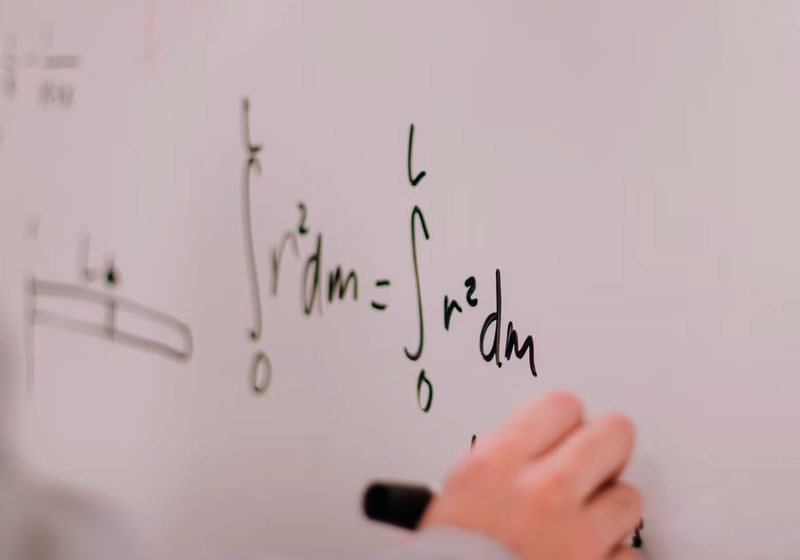 Title: Chasing patterns: diffusion-driven instabilities in networked and high-order systems
Title: Chasing patterns: diffusion-driven instabilities in networked and high-order systems
Speaker: Riccardo Muolo (Université de Namur)
October 10 from 3:30 p.m. to 4:30 p.m.
Local: Sala B106-a – Bloco B – CT – Instituto de Matemática – UFRJ
Abstract: Many natural and artificial systems exhibit collective behaviors, which show in the form of spatio-temporal patterns. This has triggered the interests of scholars, who have proposed several theories to account for such diversity. One of the most popular mechanisms of pattern formation is due to Alan Turing, who showed that diffusion can disrupt a homogeneous stable state, triggering an instability [1]. The original theory has been conceived in the framework of reaction-diffusion PDEs, but it has been recently extended on networked systems [2]. Moreover, it has been shown that a Turing-like mechanism occurs in the framework of synchronized coupled oscillators, as diffusion can lead to a loss of synchronization [3].
In this seminar I will present an overview of Turing theory in networked systems, showing that the Turing framework is indeed not too far from that of coupled chaotic oscillators [4]. I will then focus the attention on two results we have recently obtained. The first one, about the study of reaction-diffusion systems on top of non-normal networks, i.e., networks whose adjacency matrix is non-normal [5]. Such topology makes the system more sensible to perturbation, leading to a loss of stability even when a linear stability analysis predicts otherwise [6, 7]. Finally, I will briefly introduce high-order structures, i.e., hypergraphs and simplicial complexes, and show a recent extension of Turing theory on such topologies [8].
References
[1] A M Turing. The chemical basis of morphogenesis. Phil. Trans. R. Soc. Lond. B, 237:37, 1952.
[2] Hiroya Nakao and Alexander S Mikhailov. Turing patterns in network-organized activator-inhibitor systems. Nature Physics, 6:544, 2010.
[3] J Challenger, D Fanelli, and R Burioni. Turing-like instabilities from a limit cycle. Phys. Rev. E, 92:022818, 2015.
[4] Louis M Pecora and Thomas L Carroll. Master stability functions for synchronized coupled systems. Physical Review Letters, 80(10):2109, 1998.
[5] Malbor Asllani, Renaud Lambiotte, and Timoteo Carletti. Structure and dynamics of non-normal networks. Sci. Adv., 4:Eaau9403, 2018.
[6] Riccardo Muolo, Malbor Asllani, Duccio Fanelli, Ph K Maini, and Timoteo Carletti. Patterns of non-normality in networked systems. Journal of Theoretical Biology, 480:81, 2019.
[7] Riccardo Muolo, Timoteo Carletti, James P Gleeson, and Malbor Asllani. Synchronization dynamics in non-normal networks: the trade-off for optimality. Entropy, 23:36, 2021.
[8] Riccardo Muolo, Luca Gallo, Vito Latora, Mattia Frasca, and Timoteo Carletti. Turing patterns in systems with high-order interaction. arXiv preprint arXiv:2207.03985, 2022.
All the talks are held in English.
More complete information about the seminars will be available at Here.
Those who do not wish to receive our next announcements may simply send an email to <eulalia@im.ufrj.br> asking to be removed from the list.
Organizers: Giulio Iacobelli and Maria Eulalia Vares
 Title: Small ball probabilities for Gaussian processes
Title: Small ball probabilities for Gaussian processes
Speaker: Yulia Petrova (IMPA)
July 11 from 3:30 p.m. to 4:30 p.m
Abstract: In the talk we will consider a problem of small ball probabilities for Gaussian processes, which consists in finding the asymptotics of probability that a norm of a process is less than "epsilon" as "epsilon" tends to zero. This question arises in different areas: quantization of Gaussian vectors, metric entropy, etc. We will consider what is already known in the general situation and talk about more advanced results in L_2-norm, for which the distribution is totally defined by eigenvalues of the covariance operator.
All the talks are held in English.
More complete information about the seminars will be available at.
 Título: Relative entropy and sharp convergence to stationarity of the exclusion process
Título: Relative entropy and sharp convergence to stationarity of the exclusion process
Palestrante : Milton Jara (IMPA)
Data : 11/04/2022
Horário : 15:00h (Rio de Janeiro local time)
Local : Transmissão online
Confira AQUI o link para transmissão.
Resumo: After comprehensive work by Lacoin et al., the convergence to equilibrium of the one-dimensional exclusion process is well understood. In particular, the mixing time and cut-off window are explicitly known. For the particular example of the reversible exclusion process in contact with reservoirs, we show how the mixing time depends on initial conditions which are relevant in the hydrodynamic limit of the exclusion process. The proof relies on log-Sobolev inequalities, relative entropy methods and the CLT for the density of particles. Joint work with Patricia Gonçalves (Lisbon), Rodrigo Marinho (Porto Alegre) and Otávio Menezes (West Lafayette).
All the talks are held in English.
More complete information about the seminars will be available at HERE.
 Titulo: Asymptotic behavior of a low temperature non-cascading 2-GREM dynamics at extreme time scales
Titulo: Asymptotic behavior of a low temperature non-cascading 2-GREM dynamics at extreme time scales
Palestrante: Leonel Zuaznábar (IME-USP)
Data: 20/06/2022
Horário: 15:00h às 16:00h (Rio de Janeiro local time)
Local: Transmissão online
Confira AQUI o link para a transmissão.
Resumo: We are interested in the study of a class of spin glass models introduced by Derrida under the name of Generalized Random Energy Models (GREM). They are based on Gaussian random variables on the hypercube {-1,1}^N with an inherent hierarchical correlation structure. More specifically, we consider the 2-GREM model evolving under the Random Hopping Dynamics at extreme time scales, where it is close to equilibrium, and visits the configurations in the support of the Gibbs measure. There are two scenarios that may be distinguished: the cascading case (studied by Luiz Renato Fontes and Veronique Gayrard in 2019) and the non-cascading case. The cascading occurs when the ground states energies are achieved by adding up the ground states energies of the two levels. In the non-cascading case the correlations are too weak to have an impact on the extremes and the system "collapses'' to a Random Energy Models (REM). Also, in this case, the extremal configurations must differ in the first index, this phenomenon justifies the non-cascading denomination for our system. In this work we got some results about the asymptotic behavior of the GREM model and the Random Hopping Dynamics in the non-cascading case.
Joint work with Luiz Renato Fontes and Susana Frómeta.
Organizadores: Giulio Iacobelli and Maria Eulalia Vares
Todas as palestras são realizadas em Inglês.
Informações mais completas sobre os seminários estão disponíveis AQUI.
Aqueles que não desejarem receber nossos próximos comunicados, podem enviar um e-mail para eulalia@im.ufrj.br pedindo para ser removido da lista.
 Título: Sparse Markov Models for High-dimensional Inference
Título: Sparse Markov Models for High-dimensional Inference
Palestrante: Daniel Y. Takahashi (Ice/UFRN)
Data: 07/03/2022
Horário: 15:00h
Local: Transmissão online
Confira AQUI o link para a transmissão.
Resumo: Finite order Markov models are theoretically well-studied models for dependent categorical data. Despite their generality, application in empirical work when the order is larger than one is quite rare. Practitioners avoid using higher order Markov models because (1) the number of parameters grows exponentially with the order, (2) the interpretation is often difficult. Mixture of transition distribution models (MTD) were introduced to overcome both limitations. MTD represent higher order Markov models as a convex mixture of single step Markov chains, reducing the number of parameters and increasing the interpretability. Nevertheless, in practice, estimation of MTD models with large orders is still limited because of the curse of dimensionality and high algorithm complexity. Here, we prove that if only few lags are relevant we can consistently and efficiently recover the lags and estimate the transition probabilities of high order MTD models. The key innovation is a recursive procedure for the selection of the relevant lags of the model. Our results are based on (1) a new structural result of the MTD and (2) an improved martingale concentration inequality. Our theoretical results are illustrated through simulations.
All the talks are held in English.
More complete information about the seminars will be available at HERE.
